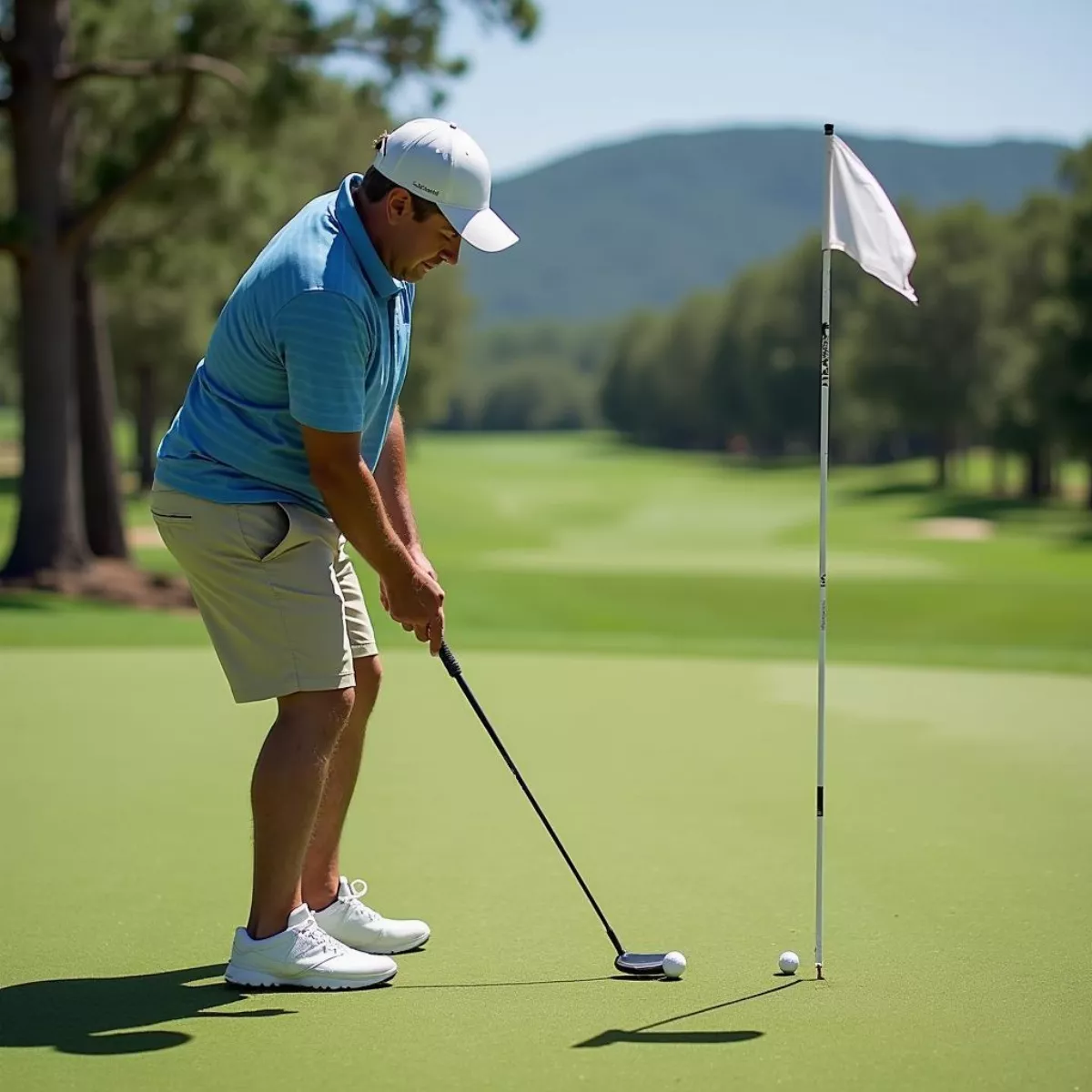Introduction: Why Aimpoint Putting Matters
Have you ever stood over a putt, unsure of how the slope affects your aim? Aimpoint putting is a revolutionary technique that can enhance your putting skills on the green, helping golfers of all levels develop a better understanding of how to read greens. Using a simple, yet effective, system based on natural and mathematical principles, you can dramatically improve your performance on the greens.
In this guide, we’ll explore the fundamentals of Aimpoint Putting, why it’s important, and how you can master it to lower your scores.
Understanding the Basics of Aimpoint
Aimpoint is a green-reading system that relies on feel and intuition rather than solely on visual observation. Here’s how it works:
- Slope Evaluation: Determine the slope of the green by standing behind the ball or the hole to judge how much break your putt will have.
- Fingers to Measure: Use your fingers to gauge the slope—this is where the system becomes a bit unique. You’ll use your fingers at arm’s length to assess how much the green breaks from the hole.
- Aimpoint Chart: Utilize Aimpoint charts that correlate the slope’s grades to left/right break amounts.
 Golfer Evaluating Green Slope
Golfer Evaluating Green Slope
Key Components of Aimpoint Putting
To master Aimpoint putting, understanding its key components is essential. Here’s a breakdown:
- Slope: Every green has slopes that will affect the ball’s path. Recognizing how steep the slope is will assist in determining how much break to play.
- Distance to Hole: The distance to the hole will change how much break your putt will have. Longer putts generally break more than shorter ones.
- Aimpoints: These are precise spots on the green that you’ll look to align your putt with, influenced by slope distance and speed.
Step-by-Step Guide to Aimpoint Putting
Here’s a practical, step-by-step guide to implementing Aimpoint putting in your game:
- Assess the Slope:
- Stand behind the ball and look down the line toward the hole.
- Observe the overall slope—uphill, downhill, right, or left.
- Measure the Slope with Fingers:
- Extend your arm with fingers pointing upward.
- Align the tips of your fingers with the angle of the slope you’ll be putting on.
- Every finger represents a degree of slope; typically, it ranges from 0° to 3°.
- Consult Aimpoint Charts:
- Look at Aimpoint charts that correlate to your finger measurement.
- The charts will guide you on how much break to play based on the slope degree.
- Choose Your Aimpoint:
- Mark a spot on the green where you want your ball to start its journey.
- This is your Aimpoint based on the slope and distance.
- Setup and Execute:
- Line up your putter to the Aimpoint you determined.
- Commit to the putt—stay relaxed and focus on your stroke.
- Practice Makes Perfect:
- Regularly practice with variations in slope and distance.
- Familiarize yourself with different greens during practice rounds.
 Using Fingers to Measure Green Slope
Using Fingers to Measure Green Slope
Benefits of Aimpoint Putting
Why should you invest time in mastering Aimpoint? Here are some significant benefits to consider:
- Consistency: By following a repeatable process, you develop a consistent rhythm and approach to putting.
- Confidence Boost: Knowing how to assess greens leads to increased confidence during play, crucial for handling pressure situations.
- Improved Reading: You’ll become adept at reading greens, which transcends into other aspects of golf when evaluating different surfaces.
Common Mistakes to Avoid
When learning Aimpoint putting, some common pitfalls can hinder your progress. Here’s a list of mistakes to watch out for:
- Overcomplicating: Overthinking the process can lead to doubt. Keep it simple!
- Ignoring Feet Position: Failing to pay attention to where your feet are can mislead your readings.
- Inconsistent Practice: Regular practice is essential for improvement; sporadic efforts can lead to regression.
 Golfer Aiming Putt Using Aimpoint
Golfer Aiming Putt Using Aimpoint
Key Takeaways
- Aimpoint Putting emphasizes slope evaluation, finger measurements, and using charts to determine aimpoints.
- Regular practice is crucial for mastery; practice with varying slopes and distances.
- Avoid overcomplicating the process and focus on simplicity and repetition.
Frequently Asked Questions (FAQ)
1. What is Aimpoint Putting?
Aimpoint Putting is a green-reading system that helps golfers gauge the slope of the green to make more precise putts.
2. Do I need specific equipment for Aimpoint?
No specific equipment is required. However, having a dedicated Aimpoint chart can be beneficial.
3. Can beginners use Aimpoint?
Absolutely! Aimpoint is suitable for golfers of all skill levels and can significantly improve a beginner’s game.
4. How can I practice Aimpoint effectively?
Use a variety of greens with different slopes and distances. Practice regularly and track your progress.
5. What are the main elements I should focus on in Aimpoint?
Focus on assessing slopes, using your fingers for measurements, and selecting accurate aimpoints.
6. Is Aimpoint just for putting?
While primarily focused on putting, the principles of Aimpoint can enhance your overall green-reading skills for the short game.
7. Can I combine Aimpoint with other putting techniques?
Certainly! Aimpoint can be integrated with other putting techniques for a more comprehensive approach.
8. How long does it take to learn Aimpoint?
The learning curve varies, but with consistent practice, golfers often see improvements within a few weeks.
9. Where can I find Aimpoint charts?
Aimpoint charts can often be found online or in specialized golf stores.
10. Does Aimpoint work for all green conditions?
Yes, Aimpoint can be used on various green conditions, from fast to slow, and is adaptable to each unique set of circumstances.
Conclusion
Mastering Aimpoint putting can transform your approach to the greens, leading to better scores and more enjoyable rounds of golf. By following the steps, practicing regularly, and avoiding common pitfalls, you’ll develop a keen sense for reading greens and making decisive putts. So grab your putter, take the plunge into the Aimpoint system, and watch your short game improve!
With this guide, you’re set on a path to mastering Aimpoint putting. For more related articles on improving your golf game, feel free to explore our other resources linked throughout the post. Happy putting!